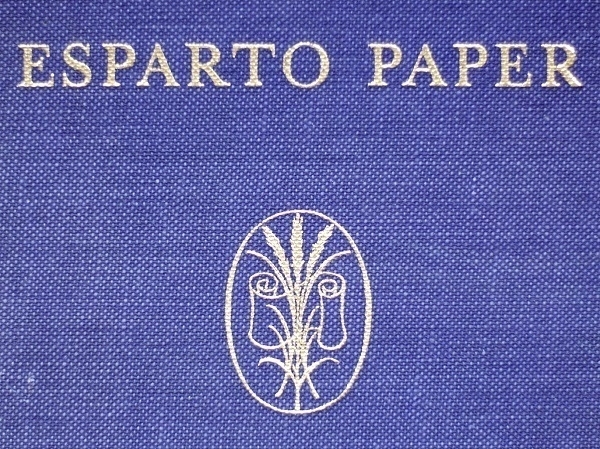Esparto

Esparto is a species of hardy, fibrous grass native to Iberia and the Maghreb. Its dried blades were traditionally used to make mats, baskets, rope and sandals (espadrilles were made from esparto). From the 1830s it begain to attract the attention of British paper-makers, who had been increasingly desperate for additional sources of raw material for paper pulp other than linen or cotton rags. The supply of rags was becoming ever less sufficient for the ramifying demands of imperial bureaucracy, steam-powered industry and burgeoning mass literacy. In 1850, one Thomas Routledge was the first to devise an economical means of manufacturing paper from esparto. By 1880, it was a mainstay of British paper-making, a position it retained for about a century, until wood-pulp came to predominate, as it had already done in most other paper-making nations.
In 1956 came the publication, by ‘The Association of Makers of Esparto Papers’, of the book whose title is shown above. The volume opens with a pictorial guide following esparto from the harvesting of the grass to the reeling, cutting and stacking of the finished paper. At the end is a short treatise describing the same process. Between them are samples of several varieties of paper such as ‘Offset Cartridge’, ‘Deckle-Edge Antique Laid’, ‘Featherweight Laid’, ‘Duplicator Wove Tinted’, and, as below, ‘Imitation Art’. Art-paper was typically coated to achieve the kind of smooth, bright & glossy finish suitable for the reproduction of paintings, etc. By pressing and polishing uncoated paper it was possible to achieve an approximation of that effect, hence ‘Imitiation’ Art.
